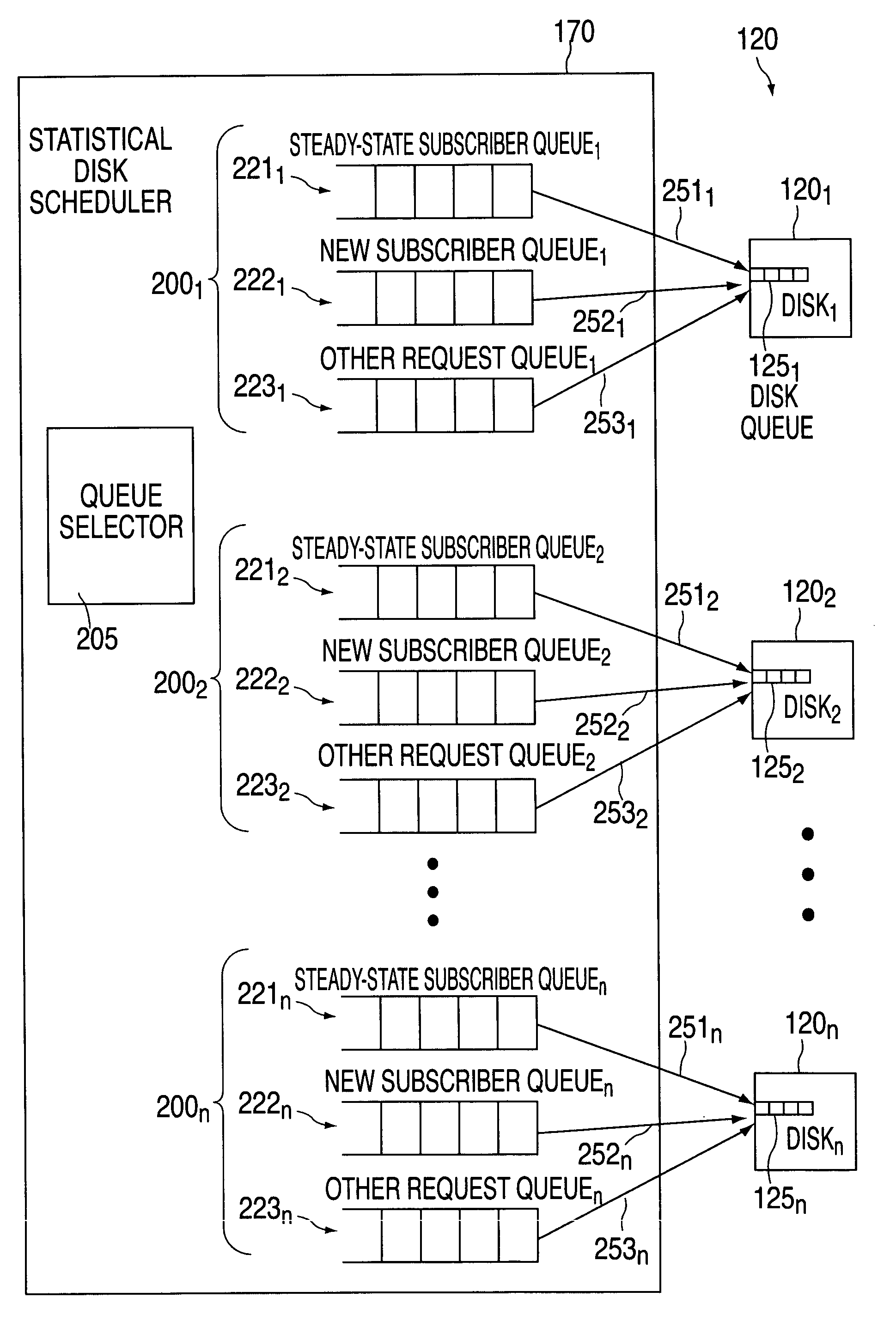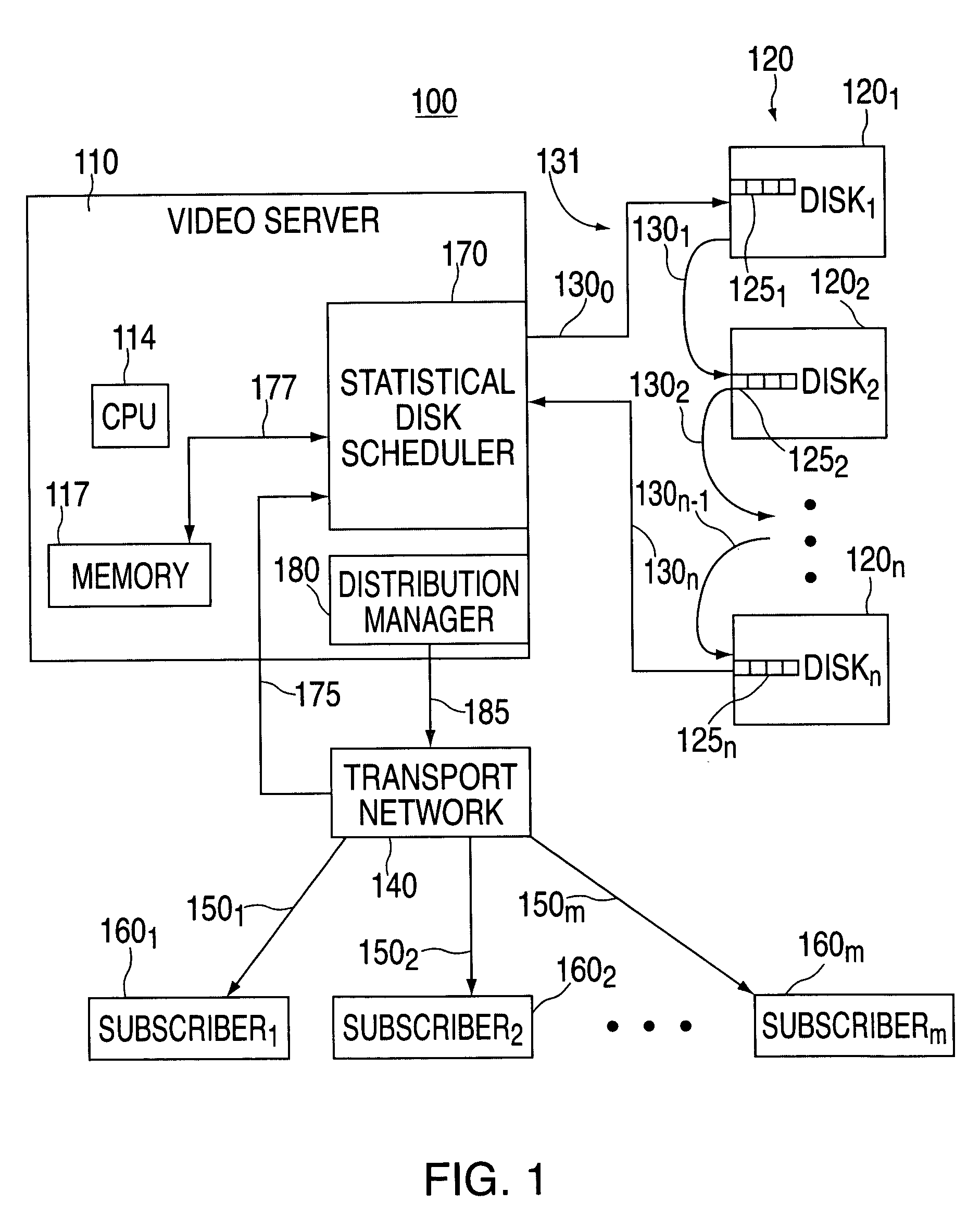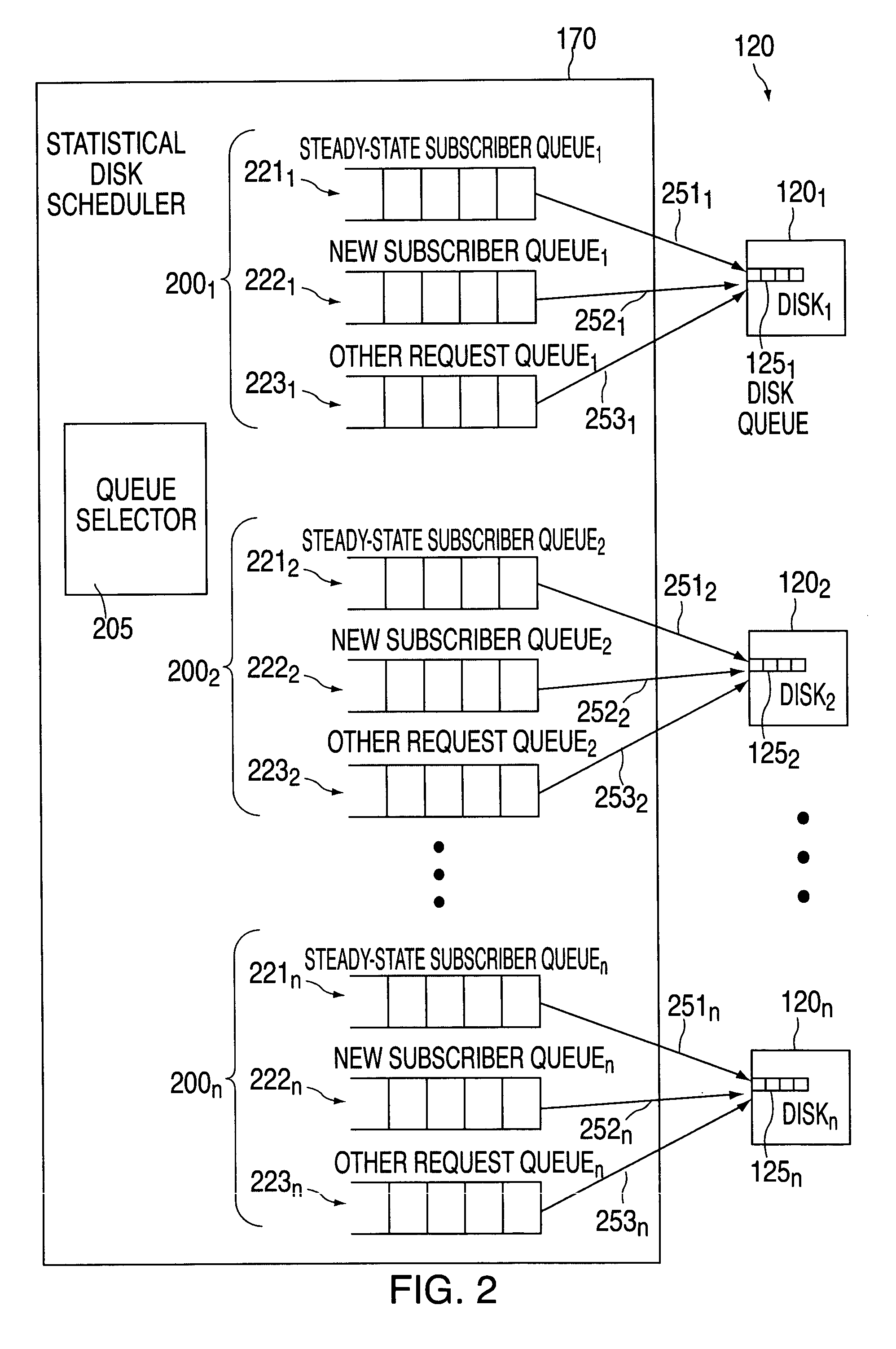Queuing architecture including a plurality of queues and associated method for controlling admission for disk access requests for video content
a video server and queue technology, applied in the field of scheduling disk access requests in video servers, can solve the problems of disk bandwidth waste, difficult to determine the effective disk bandwidth of a video server, and potential variation in the time required to service disk accesses, so as to maximize disk bandwidth utilization, and keep the disk busy
- Summary
- Abstract
- Description
- Claims
- Application Information
AI Technical Summary
Benefits of technology
Problems solved by technology
Method used
Image
Examples
Embodiment Construction
[0026]FIG. 1 depicts a video-on-demand system that utilizes a video server incorporating the teachings of the present invention. Specifically, video-on-demand system 100 contains a video server 110 that communicates with a plurality of disks 1201 through 120n (collectively disks 120) via a Statistical Disk Scheduler (SDS) 170. In addition to the SDS 170, video server 110 contains a central processing unit (CPU) 114 and memory element 117. SDS 170 is coupled to disks 120 by paths 1300 through 130n (collectively paths 130) (e.g., fiber channel), and to memory 117 by data path 177. The video server sends access requests along paths 130 to disks 120, and each disk 120 has its own internal queue 1251 through 125n (collectively queues 125) for buffering access requests. Data read from the disks are transmitted back to the video server along paths 130. The paths 130 are serially coupled, i.e., “daisy chained” to form a data transfer loop 131, e.g., a fiber channel loop. Although one loop i...
PUM
 Login to View More
Login to View More Abstract
Description
Claims
Application Information
 Login to View More
Login to View More - R&D
- Intellectual Property
- Life Sciences
- Materials
- Tech Scout
- Unparalleled Data Quality
- Higher Quality Content
- 60% Fewer Hallucinations
Browse by: Latest US Patents, China's latest patents, Technical Efficacy Thesaurus, Application Domain, Technology Topic, Popular Technical Reports.
© 2025 PatSnap. All rights reserved.Legal|Privacy policy|Modern Slavery Act Transparency Statement|Sitemap|About US| Contact US: help@patsnap.com



